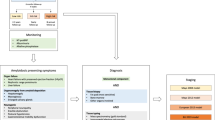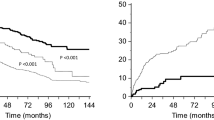Opinion statement
Amyloidosis is a disease in which abnormal proteins form fibrillar tissue deposits that can compromise key viscera and lead to early death. In order to treat amyloidosis, the type of abnormal protein must be identified. The most common type is monoclonal immunoglobulin light chain or AL amyloidosis; the other important type is hereditary, caused by variant forms of transthyretin and other proteins, whereas amyloid associ-ated with chronic inflammation (“secondary≓) is rare in the developed world. AL can be misdiagnosed if a monoclonal gammopathy and a hereditary variant are present in the same patient. The aim of therapy in systemic AL amyloidosis is to reduce the amyloid-forming monoclonal light chain, measured with the serum free light chain assay, by suppressing the underlying plasma cell dyscrasia, while using supportive measures to sustain organ function. Amyloid deposits can be resorbed and organ function restored if the amyloid-forming precursor light chain is eliminated. The most effective treatment for systemic AL amyloidosis is risk-adapted melphalan with peripheral blood stem cell transplant (SCT). The hematologic response rate is 75% at 12 months when adjuvant therapy with thalidomide and dexamethasone is used post-SCT. Patients can achieve long-term durable remissions with organ recovery. Drugs effective in multiple myeloma are usually helpful in AL amyloidosis if tolerated. The use of novel antibody-based approaches for imaging amyloid and possibly for accelerating removal of deposits is under active investigation.
Similar content being viewed by others
References and Recommended Reading
Kelly JW: Towards an understanding of amyloidosis. Nature Struct Biol 2002, 9:323–325.
Ferreira ST, De Felice FG: Protein dynamics, folding and misfolding: from basic chemistry to human con-formational diseases. FEBS Lett 2001, 498:129–134.
Wetzel R: Domain stability in immunoglobulin light chain deposition disorders. Adv Protein Chem 1997, 50:183–242.
Pepys MB: Amyloidosis. Ann Rev Med 2006, 57:223–241. An excellent overview of the disease process and the various types of disease by one of the major and seminal figures in amyloidosis
Kyle RA, Gertz MA: Primary systemic amyloidosis: clinical and laboratory features in 474 cases. Semin Hematol 1995, 32:45–59.
Merlini G, Bellotti V: Molecular mechanisms of amy-loidosis. N Engl J Med 2003, 349:583–596. Perhaps the best single introduction to the scope of amyloido-sis and the various links to other diseases.
Dhodapkar MV, Merlini G, Solomon A: Biology and therapy of immunoglobulin deposition diseases. Hematol Oncol Clin North Am 1997, 11: 89–110.
Kyle RA, Linos A, Beard CM, et al.: Incidence and natural history of primary systemic amyloidosis in Olmstead County, Minnesota, 1950 through 1989. Blood 1992, 79:1817–1822.
Kyle RA, Gertz MA, Greipp PR, et al.: Long-term survival (10 years or more) in 30 patients with primary amy-loidosis. Blood 1999, 93:1062–1066.
Duston MA, Skinner M, Shirahama T, Cohen AS: Diag-nosis of amyloidosis by abdominal fat aspiration: analysis of four years' experience. Am J Med 1987, 82:412–414.
Bradwell A, Carr-Smith HD, Mead GP, et al.: Highly sen-sitive automated immunoassay for immunoglobulin free light chains in serum and urine. Clin Chem 2001, 47:673–680.
Comenzo RL, Zhou P, Reich L, et al.: Prospective evalua-tion of the utility of the serum free light chain assay (FLC), clonal Ig VL gene identification and troponin I levels in a phase II trial of risk-adapted intravenous melphalan with adjuvant thalidomide and dexametha-sone for newly diagnosed untreated patients with systemic AL amyloidosis. In Amyloid and Amyloidosis: Proceedings of the Xth International Symposium on Amyloido-sis. Edited by Skinner M, Grateau P. Boca Raton, FL: CRC Press; 2005.
Lachmann HJ, Gallimore R, Gillmore JD, et al.: Outcome in systemic AL amyloidosis in relation to changes in concentration of circulating free immunoglobulin light chains following chemotherapy. Br J Haematol 2003, 122:78–84.
Cohen AD, Zhou P, Xiao Q, et al.: Systemic AL amyloi-dosis due to non-Hodgkin's lymphoma: an unusual clinicopathologic association. Br J Haematol 2004, 124:309–316.
Oran B, Wright DG, Seldin DC, et al.: Spontaneous rup-ture of the spleen in AL amyloidosis. Am J Hematol 2003, 74:131–135.
Lachmann HL, Booth DR, Booth SE, et al.: Misdiagnosis of hereditary amyloidosis as AL (primary) amyloido-sis. N Engl J Med 2002, 346:1786–1791.
Comenzo RL, Zhou P, Fleisher M, et al.: Seeking confi-dence in the diagnosis of systemic AL (Ig light-chain) amyloidosis: patients can have both monoclonal gammopathies and hereditary amyloid proteins. Blood 2006 Jan 26; [Epub ahead of print].
Dispenzieri A, Lacy MQ, Katzmann JA, et al.: Absolute values of immunoglobulin free light chains are prog-nostic in patients with primary systemic amyloidosis undergoing peripheral blood stem cell transplant. Blood 2006, In press.
Palladini G, Campana C, Klersy C, et al.: Serum N-terminal pro-brain natriuretic peptide is a sensitive marker of myocardial dysfunction in AL amyloidosis. Circulation 2003, 107: 2440–2445.
Dispenzieri A, Gertz MA, Kyle RA, et al.: Serum cardiac troponins and N-terminal pro-brain natriuretic pep-tide: a staging system for primary systemic amyloido-sis. J Clin Oncol 2004, 22:3751–3757. A useful introduction to the application of cardiac biomarkers to AL amyloidosis.
Dispenzieri A, Gertz MA, Kyle RA, et al.: Prognostication of survival using cardiac troponins and N-terminal pro-brain natriuretic peptide in patients with primary systemic amyloidosis undergoing peripheral blood stem cell transplantation. Blood 2004, 104: 1881–1887.
Kyle R, Gertz M, Greipp P, et al.: A trial of three regimes for primary amyloidosis: colchicine AL amyloido-sisone, melphalan and prednisolone, and melphalan, prednisolone and colchicine. N Engl J Med 1997, 336:1202–1207.
Skinner M, Anderson JJ, Simms R, et al.: Treatment of 100 patients with primary amyloidosis: a randomized trial of melphalan, prednisone, and colchicine versus colchicine only. Am J Med 1996, 100: 290–298.
Gertz MA, Kyle RA: Acute leukemia and cytogenetic abnormalities complicating melphalan treatment of primary systemic amyloidosis. Arch Intern Med 1990, 150:629–633.
Gertz MA, Lacy MQ, Lust JA, et al.: Prospective random-ized trial of melphalan and prednisone versus vincris-tine, carmustine, melphalan, cyclophosphamide, and prednisone in the treatment of primary systemic amy-loidosis. J Clin Oncol 1999, 17:262–267.
Dhodapkar MV, Hussein MA, Rasmussen E, et al.: Clinical efficacy of high-dose dexamethasone with maintenance dexamethasone/alpha interferon in patients with primary systemic amyloidosis: results of United States Intergroup Trial Southwest Oncology Group (SWOG) S9628. Blood 2004, 104: 3520–3526.
Palladini G, Perfetti V, Obici L, et al.: Association of melphalan and high-dose dexamethasone is effective and well tolerated in patients with AL (primary) amy-loidosis who are ineligible for stem cell transplanta-tion. Blood 2004, 103: 2936–2938.
Seldin DC, Choufani EB, Dember LM, et al.: Tolerability and efficacy of thalidomide for the treatment of patients with light chain-associated (Al) amyloidosis. Clin Lymphoma 2003, 3:241–246.
Dispenzieri A, Lacy MQ, Rajkumar SV, et al.: Poor tolerance to high doses of thalidomide in patients with primary systemic amyloidosis. Amyloid 2003, 10: 257–261.
Palladini G, Perfetti V, Perlini S, et al.: The combination of thalidomide and intermediate-dose dexamethasone is an effective but toxic treatment for patients with primary amyloidosis (AL). Blood 2005, 105: 2949–951.
Comenzo RL, Vosburgh E, Falk RH, et al.: Dose-intensive melphalan with blood stem-cell support for the treat-ment of AL amyloidosis: survival and responses in 25 patients. Blood 1998, 91: 3662–670.
Gertz MA, Lacy MQ, Dispenzieri A, et al.: Stem cell transplantation for the management of primary systemic amyloidosis. Am J Med 2002, 11 3: 549–55.
Comenzo RL, Gertz MA: Autologous stem cell trans-plantation for primary systemic amyloidosis. Blood 2002, 99:4276–282. A helpful account of the initial efforts to apply SCT to AL amy-loidosis and the clinical adjustments that need to be made for this SCT population.
Seldin DC, Anderson JJ, Sanchorawala V, et al.: Improve-ment in quality of life of patients with AL amyloidosis treated with high-dose melphalan and autologous stem cell transplantation. Blood 2004, 104:1888–893.
Gertz MA, Comenzo R, Falk RH, et al.: Definition of organ involvement and treatment response in immuno-globulin light chain amyloidosis (AL): a consensus opinion from the 10th International Symposium on Amyloid and Amyloidosis. Am J Hematol 2005, 79:319–28.
Skinner M, Sanchorawala V, Seldin DC, et al.: High-dose melphalan and autologous stem-cell transplantation in patients with AL amyloidosis: an 8-year study. Ann Intern Med 2004, 140:85–3. A report of the largest single-institution experience with SCT for AL amyloidosis that highlights the link between response of the plasma cell disease and survival.
Sanchorawala V, Wright DG, Seldin DC, et al.: High-dose intravenous melphalan and autologous stem cell trans-plantation as initial therapy or following two cycles of oral chemotherapy for the treatment of AL amyloidosis: results of a prospective randomized trial. Bone Marrow Trans pl ant 2004, 33:381–88.
Comenzo RL, Zhou P, Hassoun H, et al.: Risk-adapted dosing of melphalan for systemic AL amyloidosis (AL) lowers treatment-related mortality: early death but not post-3 month survival is linked to cardiac involve-ment. Blood 2005, 106: 337a.
Comenzo RL, Sanchorawala V, Fisher C, et al.: Intermediate-dose intravenous melphalan and blood stem cells mobilized with sequential GM+G-CFS or G-CSF alone to treat AL (amyloid light chain) amyloidosis. Br J Haematol 1999, 104: 553–59.
Jaccard A, Moreau P, Leblond V, et al.: Autologous stem cell transplantation (ASCT) versus oral melphalan and high-dose dexamethasone in patients with AL (primary) amyloidosis: results of the French Multi-centric Randomized Trial (MAG and IFM Intergroup). Blood 2005, 106:127a.
Gertz MA, Blood E, Vesole DH, et al.: A multicenter phase 2 trial of stem cell transplantation for immuno-globulin light-chain amyloidosis (E4A97): an Eastern Cooperative Oncology Group Study. Bone Marrow Trans pl ant 2004, 34:149–54.
Cohen AD, Zhou P, Reich L, et al.: Adjuvant dexametha-sone (D) ± alidomide (T) improves hematologic and organ responses after risk-adapted high-dose melphalan with autologous stem cell transplant (SCT) for patients with systemic AL amyloidosis (AL). Blood 2005, 106: 340a.
Lewis WD, Skinner M, Simms RW, et al.: Orthotopic liver transplantation for familial amyloidotic poly-neuropathy. Clin Transplant 1994, 8:107–10.
Holmgren G, Ericzon BG, Groth CG, et al.: Clinical improvement and amyloid regression after liver trans-plantation in hereditary transthyretin amyloidosis. Lancet 1993, 341:1113–1116.
Gillmore JD, Goodman HJ, Lachmann HJ, et al.: Sequen-tial heart and autologous stem cell transplantation for systemic AL amyloidosis. Blood 2006, 107: 1227–1229.
Isoniemi H, Kyll Ãnen, Ahonen J, et al.: Improved outcome of renal transplantation in amyloidosis. Transpl Int 1994, 7:S298–300.
Hrncic R, Wall J, Wolfenbarger DA, et al.: Antibody-mediated resolution of light chain-associated amyloid deposits. Am J Pathol 2000, 157:1239–246.
Gianni L, Bellotti V, Gianni M, et al.: New drug therapy for amyloidoses: resorption of AL amyloidosis type deposits with 4-iodo-4 deoxydoxorubicin. Blood 1995, 86:855–61.
Gertz MA, Lacy MQ, Dispenzieri A, et al.: A multicenter phase II trial of 4'-iodo-4'deoxydoxorubicin (IDOX) in primary amyloidosis (AL). Amyloid 2002, 9:24–0.
Pepys M, Herbert J, Hutchinson WL, et al.: Targeted pharmacological depletion of serum amyloid P com-ponent for treatment of human amyloidosis. Nature 2002, 417: 254–59.
Murphy CL, Eulitz M, Hrncic R, et al.: Chemical typing of amyloid protein contained in formalin-fixed paraffin-embedded biopsy specimens. Am J Clin Pathol 2001, 116:135–42.
Arbustini E, Verga L, Concardi M, et al.: Electron and immuno-electron microscopy of abdominal fat identi-fies and characterizes amyloid fibrils in suspected cardiac amyloidosis. Amyloid 2002, 9:108–14.
Comenzo RL: Light chains ahoy: pirating Thal/Dex for AL too. Blood 2005, 105: 2625.
Author information
Authors and Affiliations
Rights and permissions
About this article
Cite this article
Comenzo, R.L. Amyloidosis. Curr. Treat. Options in Oncol. 7, 225–236 (2006). https://doi.org/10.1007/s11864-006-0015-8
Issue Date:
DOI: https://doi.org/10.1007/s11864-006-0015-8




